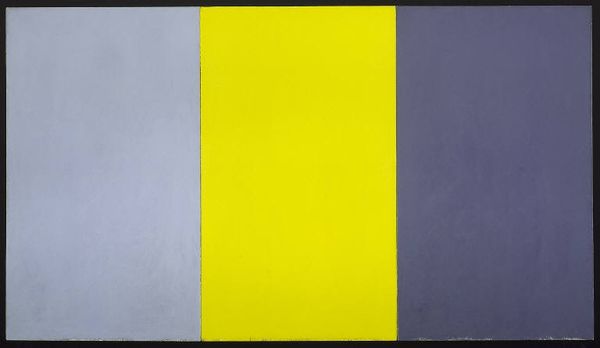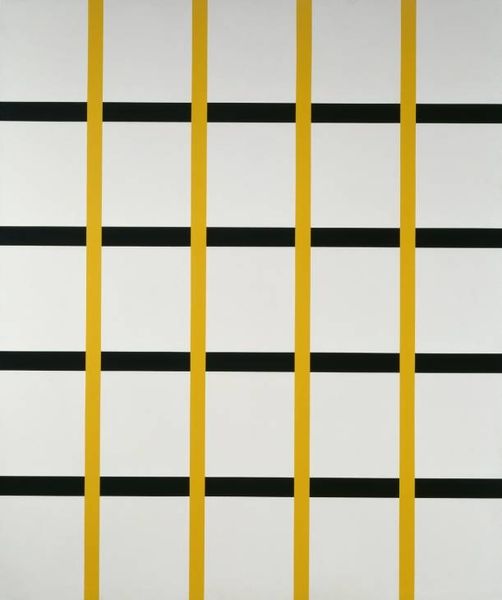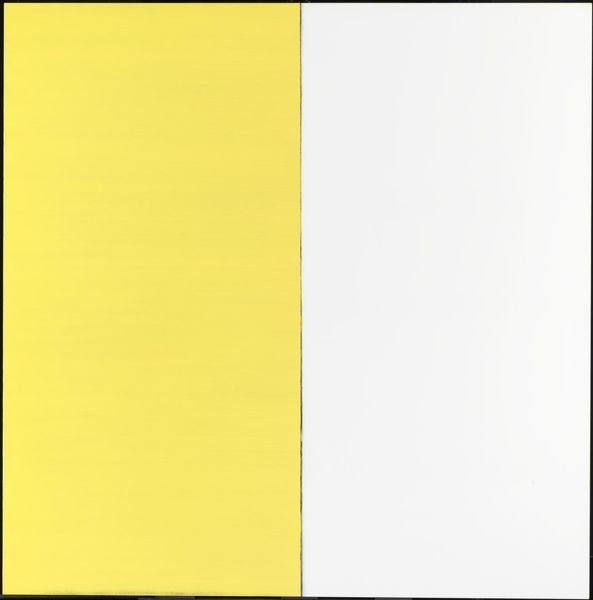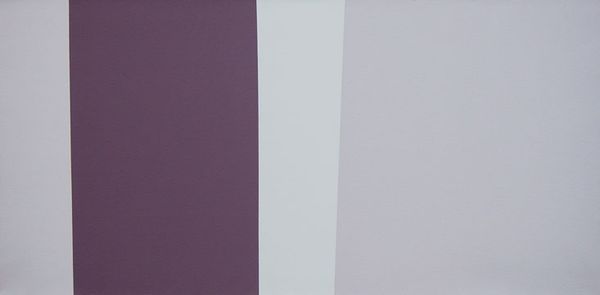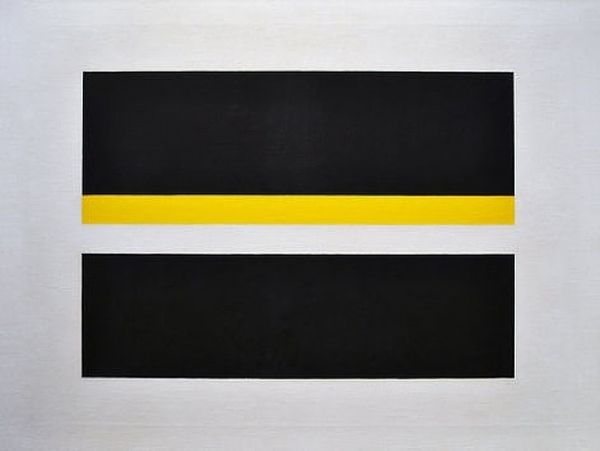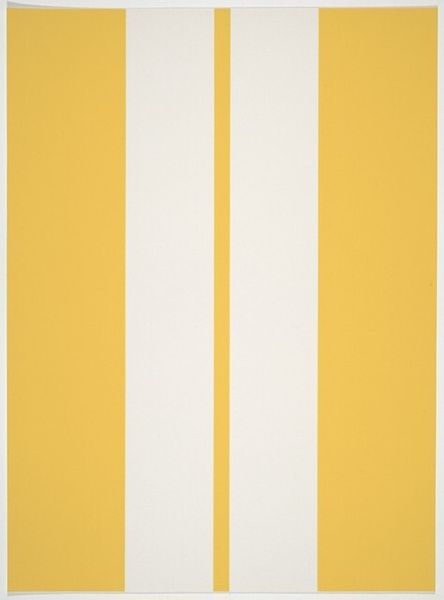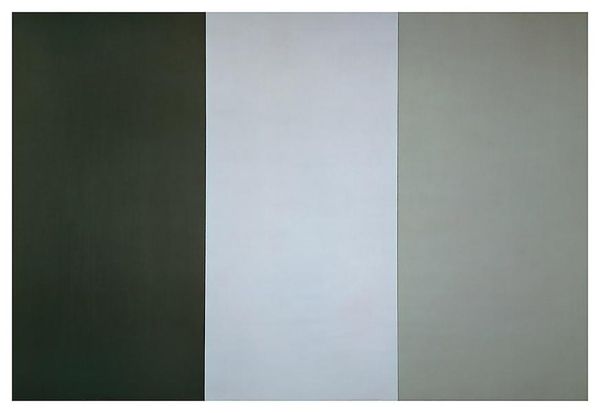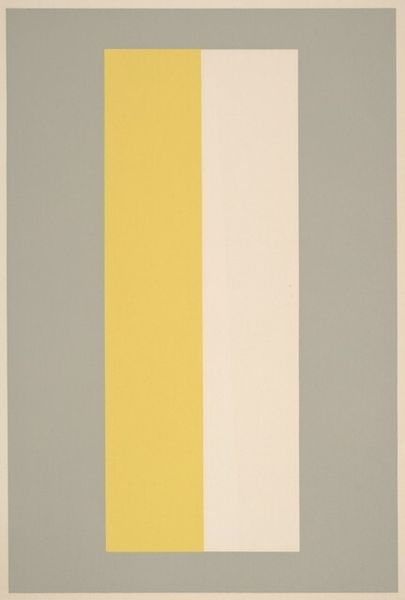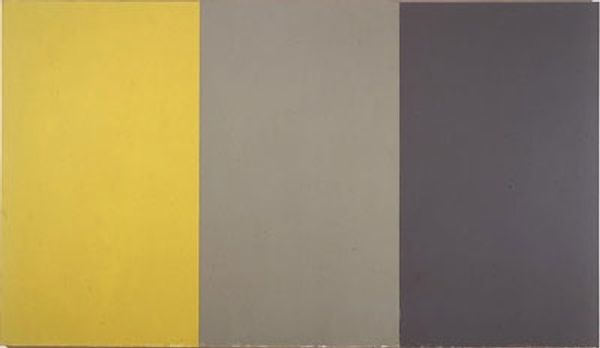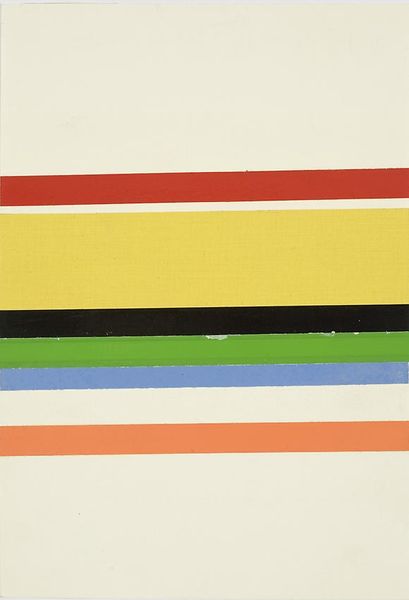
acrylic-paint
#
abstract-expressionism
#
non-objective-art
#
minimalism
#
op art
#
pop art
#
minimal typography
#
colour-field-painting
#
acrylic-paint
#
geometric
#
white focal point
#
abstraction
#
line
#
modernism
#
hard-edge-painting
Copyright: John McLaughlin,Fair Use
Curator: What an intriguing combination of serenity and starkness. The first thing that hits me is the balance, almost a precarious tension, created by these blocks of color. Editor: You've touched upon something key. This is John McLaughlin's "Number 3" from 1961, rendered in acrylic paint. It's an exemplar of Hard-edge painting. Note how McLaughlin limits his palette, reduces forms to their bare essence. It invites, even demands, meticulous attention to its compositional elements. Curator: And I feel that the color choices are critical here. The vibrant yellow, contrasted against the cool gray, is an emotional and even psychological confrontation. It makes me question the roles color can play, what those colors have come to signify to us now, through cultural association, but maybe also some inherent visual properties that hit us somewhere deep in the collective consciousness. Editor: I agree. I wonder how it resonates given that McLaughlin was deeply influenced by Eastern philosophy and Zen Buddhism. The work can then be regarded less as just aesthetic endeavor but as an exercise in reduction, an active pursuit of stillness and, arguably, transcendence. We should keep in mind that he intended for the paintings to invite introspection, not project narratives. Curator: So the composition itself, while minimal, is profoundly active. The relationships between colors are key. It feels more than just decoration; it feels deliberately iconic. Does it succeed in helping me forget myself? Perhaps that’s a Western read onto it all. The attempt is surely sincere though. Editor: Interesting perspective! His paintings exemplify an attempt to pare down reality, mirroring, perhaps, the process of Zen meditation. But do you believe such purity of form and the elimination of traditional representational content truly achieves this aim, or do our own projections, based on our own background and associations, inevitably intervene? Curator: Isn't that the heart of it, really? Whether it achieves its intention or just sparks our own interpretive journey. Regardless, I think McLaughlin has succeeded in creating a thought-provoking piece. Editor: Absolutely. The formal rigor forces you to ask what the artwork is 'for,' and to then come to some kind of agreement with yourself.
Comments
No comments
Be the first to comment and join the conversation on the ultimate creative platform.
